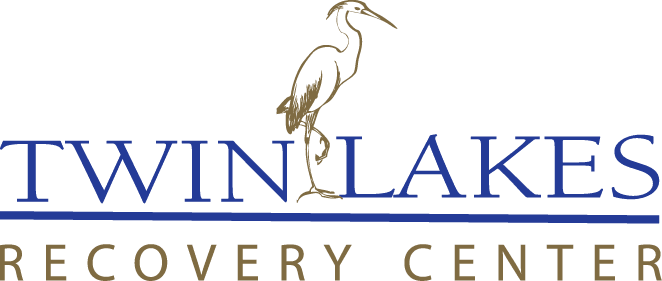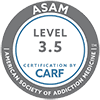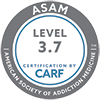
When you or a loved one need help for substance abuse, it’s important to get treatment as soon as possible.
But how will you pay for it?
It’s challenging to provide a ballpark figure of anticipated costs. Each individual’s needs vary considerably, as does the necessary treatment approach. There are also considerable differences between outpatient services and residential facility care.
The American With Disabilities Act (ADA) allows reasonable accommodations for persons with addictions. This doesn’t mean people who struggle with substance use disorder (SUD) can continue to abuse drugs or alcohol with unlimited protection. What the ADA enforces is a policy of medical coverage which you or a loved one can apply to addiction treatment.
The ADA and the Affordable Care Act (ACA), along with the Mental Health Parity and Addiction Equity Act (MHPAEA), require insurers and group medical plans to provide the same level of benefits for mental and/or substance use treatment and services as they do for medical/surgical care.
Keep in mind that in the current insurance marketplace, seeking assistance through your carrier and deciphering your coverage may add to the complexities you’re already experiencing. Here’s a step-by-step process we hope will help.
Step One: Understanding Your Policy
Each insurance carrier offers a vast range of plans based on an individual’s needs or price. These policies also vary if you have an employer-sponsored plan, a self-employment plan, Medicare supplement, and so on. As such, you first need to verify the exact plan you have and the guidelines for drug and alcohol rehabilitation.
For example, United Healthcare, one of the largest medical insurers in the U.S., provides various levels of treatment coverage through most of its options, barring one—its Short-Term Medical Value Plan. Other providers may offer differing coverage for inpatient vs. outpatient treatment services. All will more than likely require you to meet a substantial deductible before certain services are covered.
Most carrier websites have a client portal to access detailed policy information. You may be able to access this with your insurance card information or a unique login and password. Also consider calling a customer service representative.
Step Two: Questions About Coverage
Once you have an idea about how your policy covers substance abuse treatment, it’s important to look at the details regarding which services fall under the plan. Make sure to get information about:
- Assessment by a physician or the addiction treatment facility: Most insurance policies won’t cover addiction treatment without a professional assessment.
- Medical detoxification: Detox may not be necessary, but if it is, you should ask what processes are covered.
- Addiction treatment medications: Certain substances or co-occurring disorders might require a gradual release from brain-altering chemicals.
- Anti-craving medications: Prescription medication can help stabilize the potential for relapse.
- Residential (inpatient) treatment: Depending on the circumstances, inpatient treatment might provide the best quality of care.
- Home health visits: These services might be recommended either as an individual treatment approach or part of a larger continuum of care plan.
- Outpatient treatment: Some policies may only provide coverage for inpatient or outpatient care, neither, or both.
- Clinic visits: These may be required first, on an as-needed basis, or as part of acceptable treatment covered by your insurance carrier.
- Alcohol and drug testing: This might be also be required initially, as part of an employer’s mandate when you return to work, or a stipulation of sober living housing.
- Family counseling: Often considered a cornerstone of treatment, it might be beneficial to make sure this is covered.
- Ancillary treatments: Often inpatient facilities have additional services such as alternative therapies and special amenities, so you’ll need a full breakout of what your insurance plan will and won’t cover to prepare for out-of-pocket expenses.
Following MHPAEA guidelines, the majority of insurance companies designate treatment for addiction as that of any other chronic disease. Nevertheless, clarify how your carrier evaluates whether treatment is medically necessary.
Step Three: The Actual Cost of Treatment
Before choosing a treatment center, it’s imperative to understand your insurance company’s guidelines regarding out-of-network and in-network providers, as well as payment options after the deductible is met. Each carrier has differing requirements, and while you still may prefer a certain type or location of treatment based on other mitigating factors, you want to be certain it’s within a manageable cost range.
It’s also important to determine the timeline and accessibility to coverage in the event of a relapse. Some carriers may allow you or someone you love to enter a treatment facility a certain number of times per year, or only once a year.
While the thought of relapsing is difficult to accept, it will happen to an average of 40-60 percent of individuals after treatment. This doesn’t mean the person failed or treatment wasn’t a good solution. It’s simply an indicator that additional care is needed to address triggering factors and responsive behaviors.
Contact Admissions at Twin Lakes Recovery Center
If you or a loved one is ready for treatment now, the caring professionals in the Twin Lakes admissions office can walk you through the process of choosing care and how we work with your insurance company or other financial resources. Twin Lakes accepts most major insurance plans, and we’re available around the clock to answer your questions.



